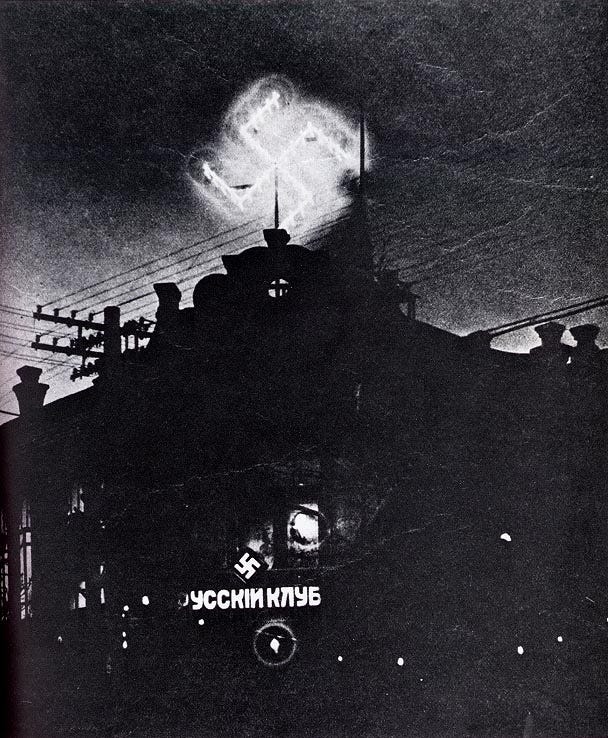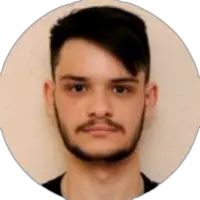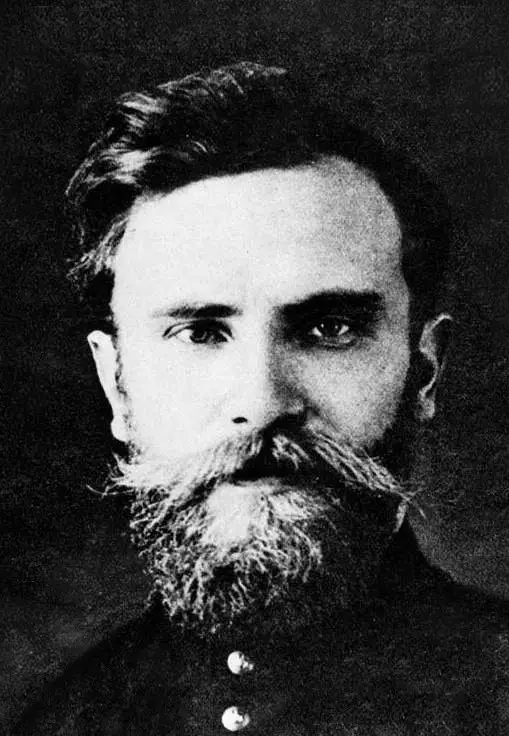 uring the early days of the USSR, many figures tried to influence the population to overthrow the new and relatively illegitimate Soviet government. Once the Russian civil war ended in many of these oppositional forces tried to influence the Russian population outside of the USSR’s border. All kinds of movements popped up during the early years of the USSR, ranging from monarchists who wanted to bring the Tsar back on the throne, to anarchists and finally the subject of our article, fascists.
uring the early days of the USSR, many figures tried to influence the population to overthrow the new and relatively illegitimate Soviet government. Once the Russian civil war ended in many of these oppositional forces tried to influence the Russian population outside of the USSR’s border. All kinds of movements popped up during the early years of the USSR, ranging from monarchists who wanted to bring the Tsar back on the throne, to anarchists and finally the subject of our article, fascists.
The Russian Fascist Party

During the Russian Civil War, many Russian fascists fought alongside the Whites against the ‘Red Menace.’ Once the civil war was over, many of those who sympathized with the opposition, such as Константин Владимирович Родзаeвский (Anglicised: Konstantin Vladimirovich Rodzaevsky) had to flee in fear of being persecuted. In the case of Rodzaevsky, he fled to Japanese-controlled Manchuria.
Once in Manchuria, Rodzaevsky enrolled in the law academy of the city of 哈尔滨 (Anglicised: Harbin), where his interest in Russian nationalism led him to join the Russian Fascist Organization. In the early 1930s, the group grew, leading to it changing its name to the Российская фашистская партия (Translated: Russian Fascist Party).
Rodzaevsky slowly worked his way up the ranks, becoming the party’s Secretary-General on 26 May 1931. Rodzaevsky also created a newspaper to accompany the party under the name of Наш Путь (Anglicised: Nash Put), meaning “Our Way,” the party’s slogan. The newspaper focused on the party’s ideals, such as Russian ultranationalism, Christian Orthodoxy, and most importantly, fascism.
Expansion and influence
In 1934 the party expanded by merging the current membership of the party with the Russian Fascist Organization of Anastasy Vonsyatsky. With this move, Rodzaevsky moved up even further up the party ranking becoming its leader. After Rodzaevsky became the leader, much changed within the party.
The leadership structure was reformed with Rodzaevsky at its center, mirroring the leadership structure of the Italian fascist leader Benito Mussolini, someone Rodzaevsky looked up to. Rodzaevsky also handpicked his bodyguards modeling them around the elite SS of Hitler. The uniform of the party was also changed to reflect the Nazis in Germany through the use of black uniforms.

Rodzaevsky’s new hometown of Harbin became the center of all Russian Fascism through the help of the Imperial Japanese Army, which supplied the party with resources and weapons. Habin was nicknamed the “Russian Far East Moscow” due to all of the Russian immigrants residing in the city.

During his reign as the leader of the Russian Fascist Party, Rodzaevsky tried to instigate revolutions in the Far East of Russia against the incumbent communists.
With the resources given to him by the Japanese, Rodzaevsky’s schemes had little to no success. Perhaps one of the most significant of his actions was erecting a large neon swastika 3km across from the Russian border as a show of force towards those he deemed as ‘occupiers’ of the motherland.
Militarily the party didn’t do much under Rodzaevsky except train with the Asano Detachment of the Manchurian army.
The Japanese army created an all ethnic-Russian special forces regiment for the members of the party to join. Those part of this ‘special forces’ regiment trained along with the normal army members in preparation to take back the motherland.
World War Two
Once World War Two started, and the USSR declared war upon Japan, Rodzaevsky could prove himself. Although the troops of the Russian Fascist Party had limited training mainly geared towards sabotage, they managed to support the Japanese up to a point. Once the Moscow of the Far East was captured by the Russians during the offensive in the Far East, Rodzaevsky knew he was in danger.
Once Habin was captured, so was Rodzaevsky. Knowing he was on the KGB’s red list, Rodzaevsky tried to appeal to Stalin’s ego by stating that both men aligned in the sense of wanting to see Russia become stronger and greater. In a letter to Stalin, he stated:
“I issued a call for an unknown leader, […] capable of overturning the Jewish government and creating a new Russia. I failed to see that, by the will of fate, of his own genius, and of millions of toilers, Comrade J.V. Stalin, the leader of the peoples, had become this unknown leader.”
Thinking that his appeal to Stalin worked, he returned to Russia, where he was promised freedom and a job in one of the Soviet newspapers. This was a trap, and on his arrival, he was arrested, put on a show trial, and executed for crimes against the state. With his death came the death of the Russian Fascist movement although splinter movements still exist, none have reached the size of Rodzaevsky’s Russian Fascist Party.

Student of Philosophy, Politics and Economics. History fanatic. Contact: aneculaeseicg@gmail.com





